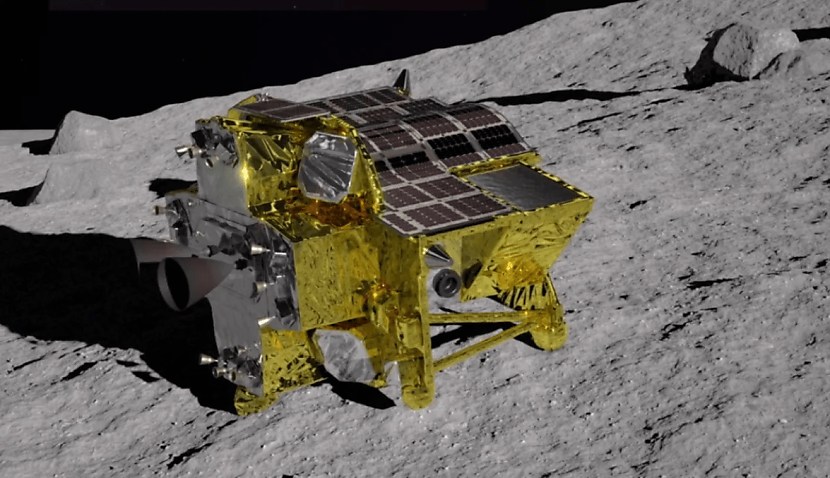
Slim was forced to survive on limited battery power after its solar generators pointed away from the sun, before eventually powering down when reserves reached 12 per cent.
However, in a new update, JAXA said it could be reactivated later when sunlight eventually pours in from the west – the direction its solar cells are now facing.
“There is a possibility of generating power, and we are preparing for recovery,” the team posted on social media.
Traditionally, Moon missions attempt to land early in the lunar day, when the Sun rises from the east, giving two weeks of illumination before it sets in the west for two subsequent weeks of darkness.
Sunset over the Shioli crater, where Slim is situated, is expected early on 31 January. If successful, Slim will then attempt extra objectives, including using its camera to assess the composition of the crater.
The team also revealed that, during its limited time alive, Slim was able to obtain “a lot of data”, including technical information and images during the landing descent.
JAXA will hold a press conference on Thursday to reveal further information.
Whether or not Slim can be reactivated, the mission meant Japan became only the fifth nation to successfully land on the moon.
It also achieved its primary mission of achieving a soft, precision landing on an area the size of a football field.
“The big objective of Slim is to prove the high-accuracy landing — to land where we want on the lunar surface, rather than landing where we can,” said Hiroshi Yamakawa, chief executive of JAXA, before the touchdown.
The Slim mission – or Smart Lander for Investigating Moon – aimed to land within just 100 metres of its target point, a sloped rim inside the 300-meter-wide Shioli crater.
Previous landings have traditionally aimed for a landing zone of several square kilometres.
Project manager Shinichiro Sakai said, “No other nation has achieved this. Proving Japan has this technology would bring us a huge advantage in upcoming international missions.”
It follows two earlier attempts by Japan to land spacecraft in the past two years: the Omotenashi lander scrapped an attempted landing in 2022, while the Hakuto-R Mission 1 crashed last April.
Japan now joins the US, China, the Soviet Union and India in pulling off the feat.
The country's success comes after NASA announced earlier this month that its Artemis II mission to fly astronauts close to the moon has been delayed from later this year to September 2025.
The space agency blamed a number of technical issues, including problems with the Orion spacecraft’s life support systems and heat shield.
The revised timetable will also push back NASA’s Artemis III mission to return humans to the moon itself to September 2026. It’s not yet known whether the complications will affect Australia’s plans to send a rover to the moon to pave the way for a human base.

Adam Thorn
Adam is a journalist who has worked for more than 40 prestigious media brands in the UK and Australia. Since 2005, his varied career has included stints as a reporter, copy editor, feature writer and editor for publications as diverse as Fleet Street newspaper The Sunday Times, fashion bible Jones, media and marketing website Mumbrella as well as lifestyle magazines such as GQ, Woman’s Weekly, Men’s Health and Loaded. He joined Momentum Media in early 2020 and currently writes for Australian Aviation and World of Aviation.
Receive the latest developments and updates on Australia’s space industry direct to your inbox. Subscribe today to Space Connect here.









